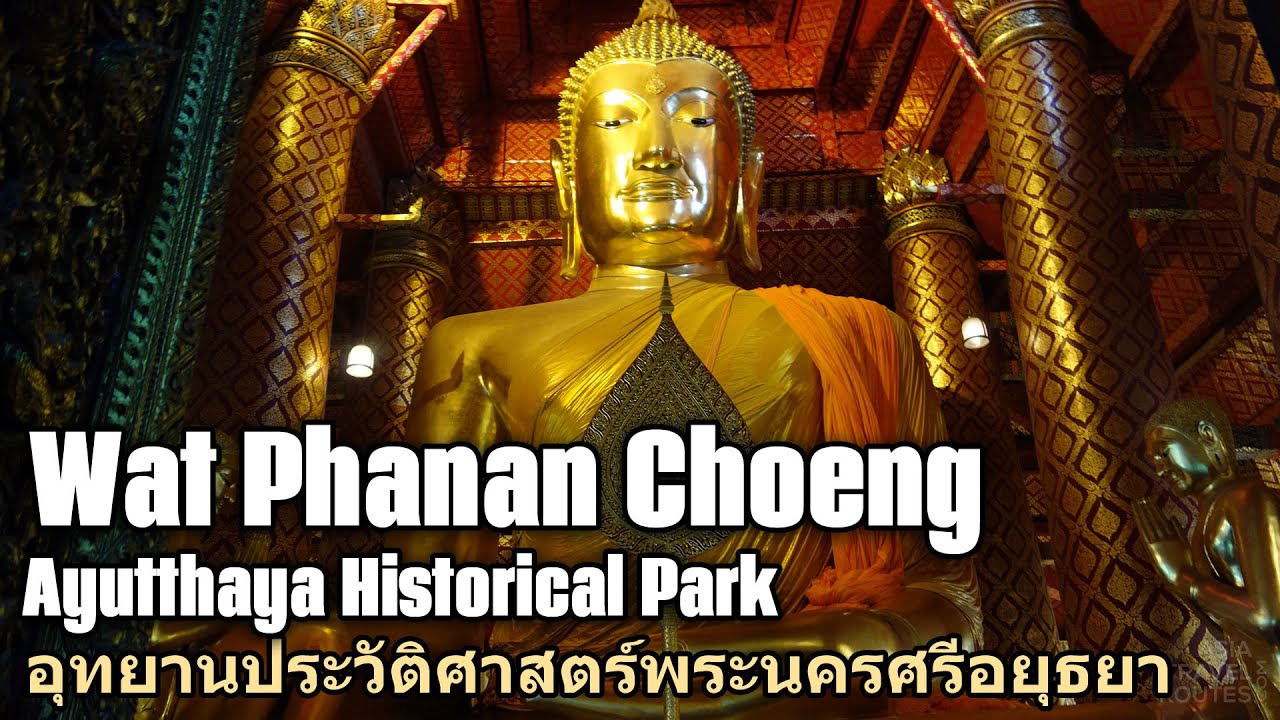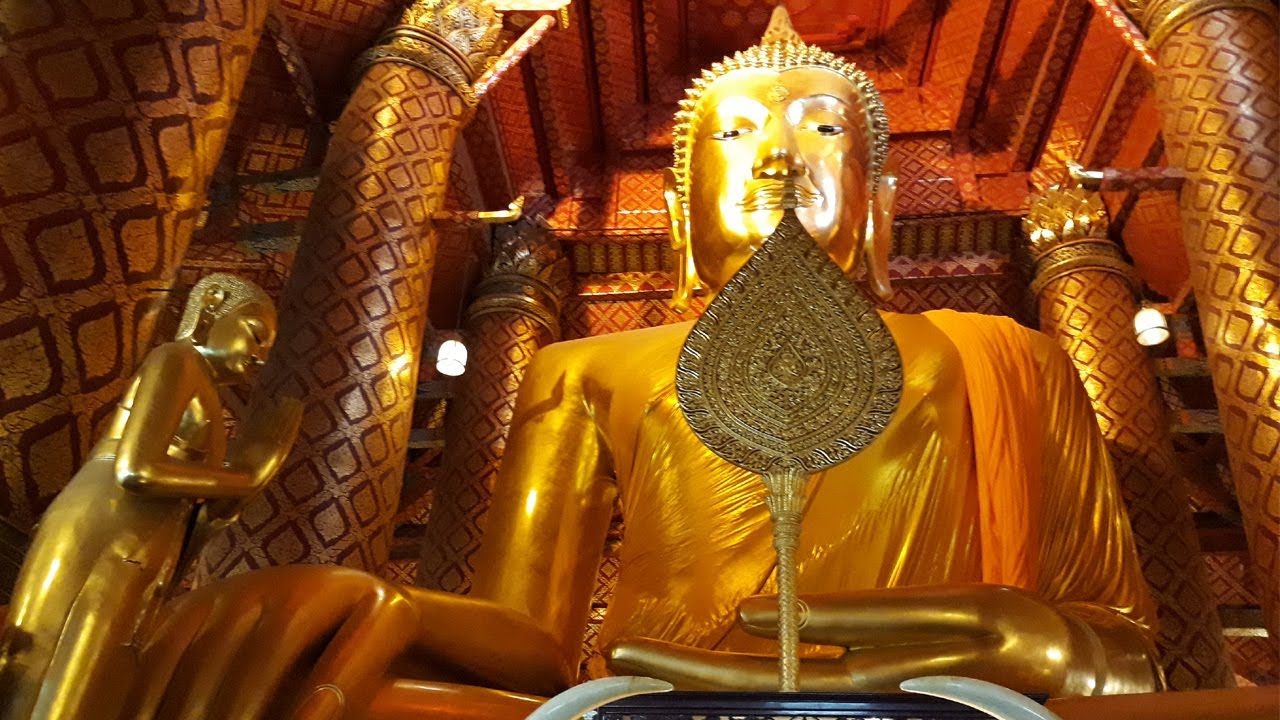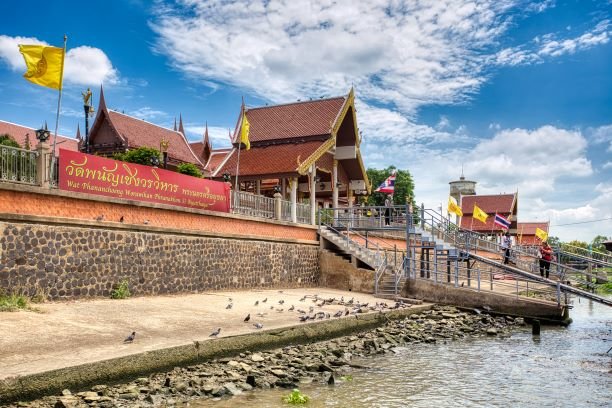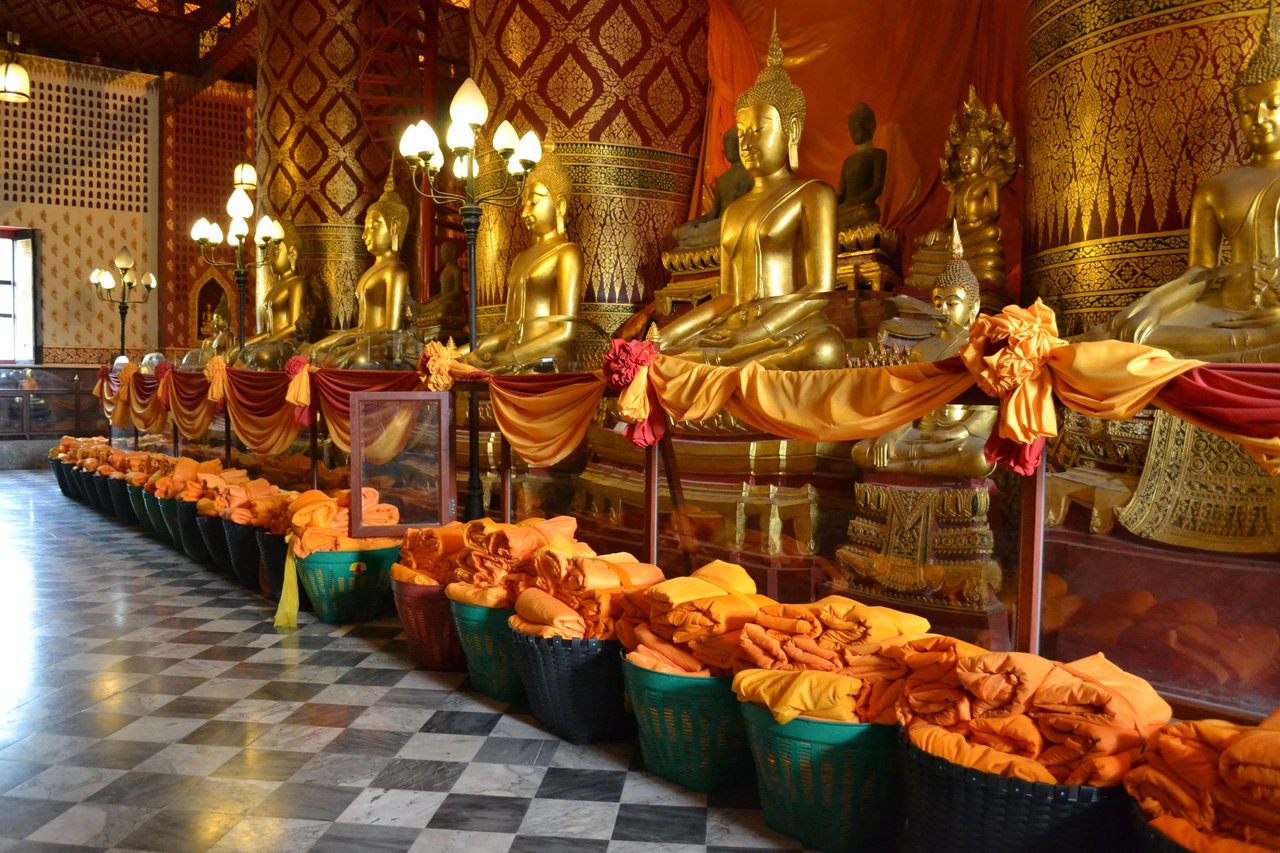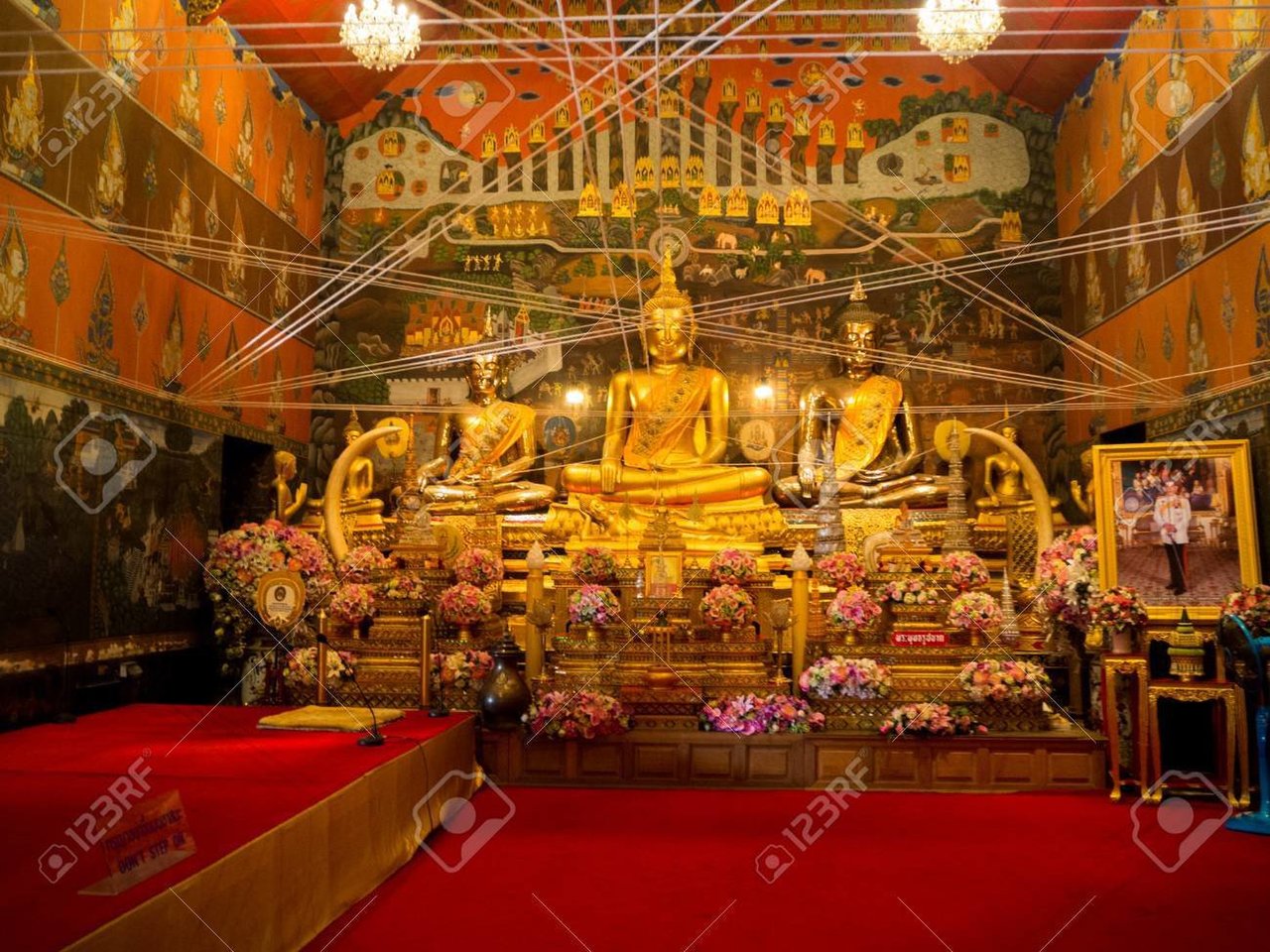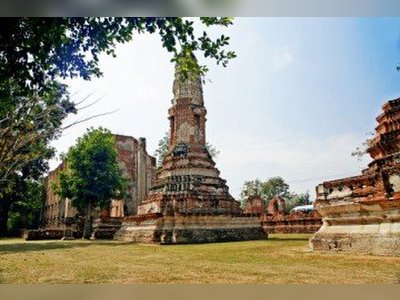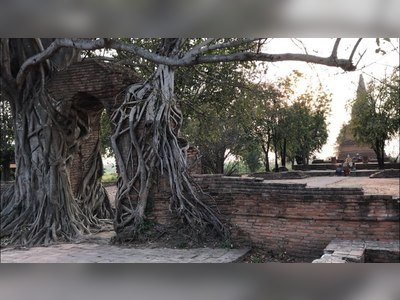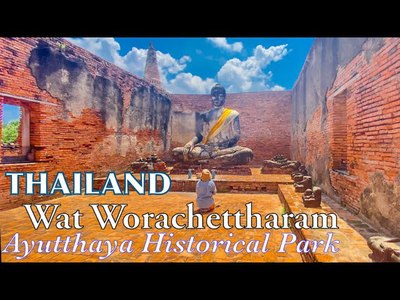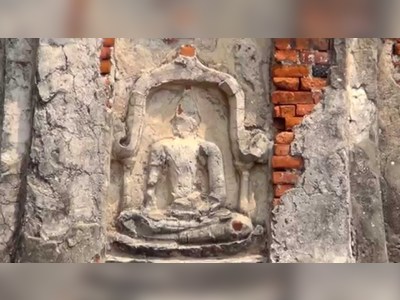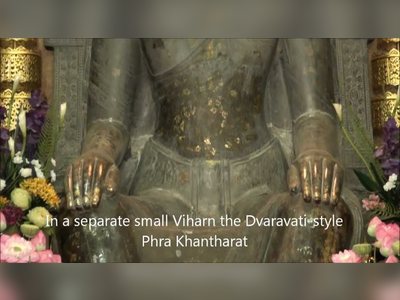Wat Phanan Choeng
Wat Phanan Choeng is one of the spectacular Buddhist temples found within the Historical Park of Ayutthaya.
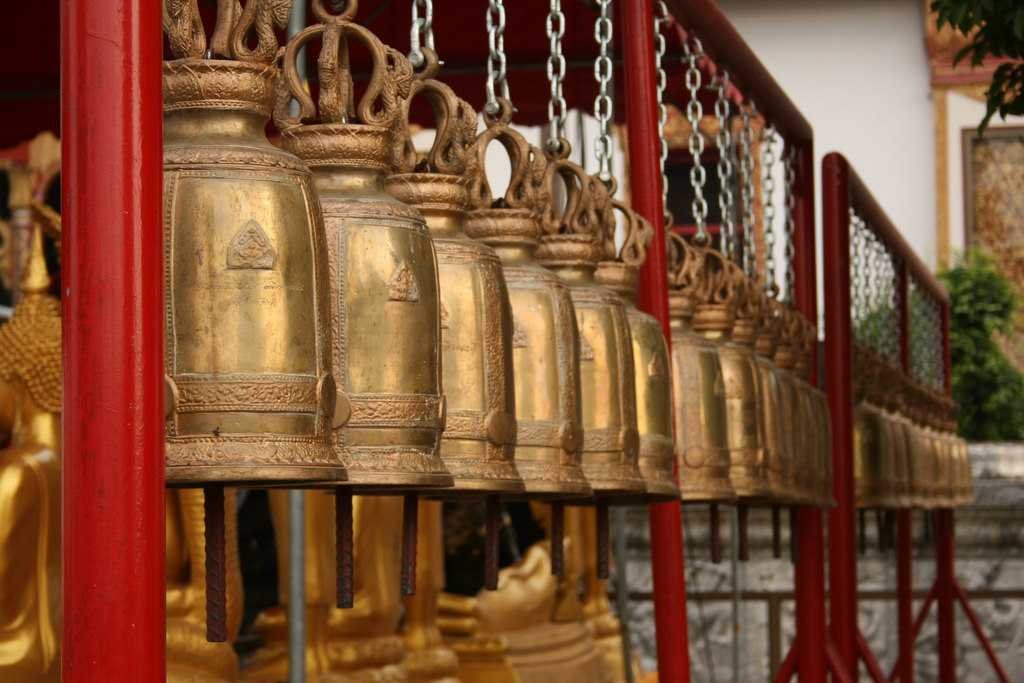
It differs from the other temples in the vicinity by being a living monastery that still follows the doctrine of Buddhist faith with people worshipping the statue of the sitting Buddha. Believed to have been constructed in the latter half of the 14th century, the ruins reveal an opulence and deep spirituality. Wat Phanan Choeng is most known for an enormous gilded statue of Lord Buddha in the traditional Mara or sitting posture. Legend has it that the statue shed tears during the rampage by the Burmese army in 1767 just before the temple was ransacked and looted of its possessions. The most scenic view of the temple is apparent from a riverboat on the Pa Sak River flowing along the region. The ancient temple also includes a pier for boats making it convenient to reach it by water.
The temple complex is packed with visitors on weekends as the Buddha statue remains a highly reputed one and worshipped by the masses. The local Thais as well as the Chinese pray to the image and try to read the signs that predict their future. Archaeologists have found reasons to date Wat Phanan Choeng almost 25 years prior to the formation of the Ayutthaya city and kingdom. Surprisingly, it is surrounded by a Chinese community and centre with the area displaying a marked Chinese influence in its buildings. A shrine dedicated to a Chinese Goddess can also be found within the temple complex that is visited by the local Chinese population.
Tips
It is essential to carry drinking water as one tends to get thirsty while touring the temple
Protecting the head and face with an umbrella or cap is advisable with the foreigners being asked to use sunblock liberally on their faces to prevent sunburn
Wat Phanan Choeng is an active temple that necessitates the visitors to dress properly by keeping their knees and shoulders completely covered
It is essential to remove the footwear outside the main shrine
Speaking in loud tones and shouting is taboo inside the temple
Public display of affection is frowned upon here as well
History & Significance of Wat Phanan Choeng
The facts about the actual construction of Wat Phanan Choeng have been obscured by time although the Royal Chronicles do provide a gist into the date, i.e., 1324, a time that is almost 25 years before the construction of Ayutthaya by King U-Thong. It is no wonder, therefore, that the 19-meter tall statue of Buddha or Luang Pho To was kept out in the open for decades before being enshrined into the assembly hall of the temple.
Although there is no concrete evidence about the constructor of the temple yet the legend of unrequited love between King Phra Chao Sai Namphung and the Chinese Princess ending in her death recounts the construction of Wat Phanan Choeng on the cremation site of the Princess. The statue of the sitting Buddha had been repaired and restored multiple times with King Mongkut better known as Rama IV having restored it entirely in 1854 and then renaming it as Phra Buddha Trai Rattana Nayok. The Royal Institute undertook the task of repairs, and the lower jaw of the statue was found to be broken.
Architecture of Wat Phanan Choeng

Wat Phanan Choeng Monastery complex includes four different building that consists of a couple of Viharas or assembly halls, an ordination area as well as a temple dedicated to a local Chinese Goddess. Three prominent statues of Buddha are placed within the ordination hall probably constructed during the Sukhothai period. All three of the statues had been heavily lacquered and gilded. The stucco images were found to be made out of gold and a number of metallic alloys containing copper and silver apart from gold. The walls are inlaid with murals showcasing the period and times of Buddha.

The smaller Vihara located to the North of the ubosot houses a sitting Buddha statue as well with the walls being adorned with magnificent Chinese murals. The principal Vihara is the place that has the most important Luang Pho To statue. It is a shrine dedicated to Lord Buddha with the door being beautifully carved with floral designs. The central panel is decorated heavily with tiny figures of mythical animals as well as sacred deities depicted via traditional artwork of Ayutthaya. The walls are covered with numerous niches each of which contains a tiny statue of Buddha.
The shrine dedicated to Soi Dok Mak is a traditional Chinese temple featuring two separate buildings with a courtyard in the middle. The deity of Soi Dok Mak can be viewed on the upper floor with the windows and doors being adorned with colourful mythical figurines depicting dragons and Phoenix.
How To Reach Wat Phanan Choeng
The striking Wat Phanan Choeng can be found on the South Eastern end of the Historical Island of Ayutthaya, on the banks of the Pa Sak River. The Baan Hollanda (Dutch Village) and the Japanese Village can be found in close proximity to it.
By Train - The locals prefer to take the train to the Ayutthaya station, travelling on a third class carriage for THB 35.
By Foot/Personal Vehicle - The Wat at Amphoe Phra Nakhon Si Ayutthaya can be reached on foot or by hiring a motorcycle taxi.
By Bus - There are several buses plying along Route 3477 where one can alight at Wat Yai Chai Mongkhon and walk the rest of the way.
By Car - Minivans are the most popular form of transportation for foreign tourists who can travel up to the Victory Monument for THB 100 and then hire a bicycle or a tuk-tuk to the shrine.
By Boat (Tours) - Boat Tours stop at Wat Phanan Choeng as well making it convenient for the tourists to visit the shrine by alighting at the pier.
Phra Nakhon Si Ayutthaya District
Phra Nakhon Si Ayutthaya
